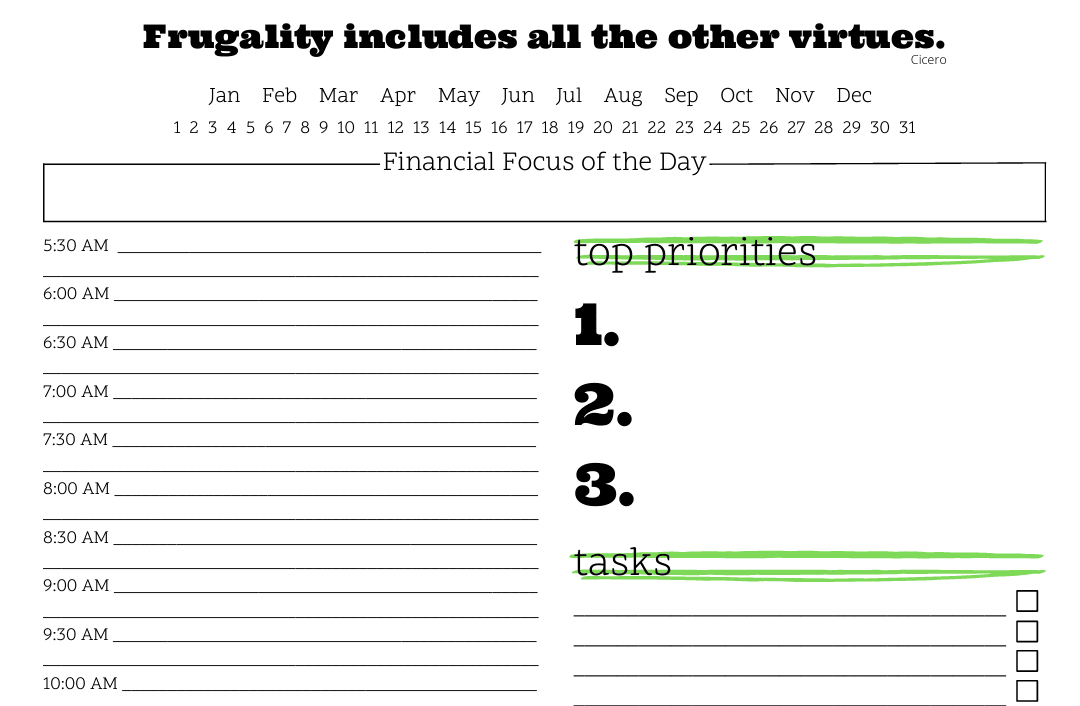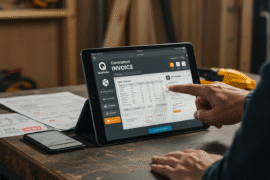This article may contain references to products or services from one or more of our advertisers or partners. We may receive compensation when you click on links to those products or services. Nonetheless, our opinions are our own.
The information presented in this article is accurate to the best of our knowledge at the time of publication. However, information is subject to change, and no guarantees are made about the continued accuracy or completeness of this content after its publication date.
Effective Budgeting Methods
Managing finances through budgeting supports achieving short and long-term financial goals. Two widely used methods, traditional and reverse budgeting, offer distinct approaches to organizing income and expenses. Each method caters to different financial priorities and management styles. By understanding their structures and benefits, individuals can select the approach that aligns with their income stability and objectives. This outlines both methods, their differences, and practical steps to implement them effectively.
Traditional Budgeting Explained
Traditional budgeting starts by allocating monthly income to necessary expenses, such as housing, utilities, and transportation. Remaining funds are then distributed to discretionary spending, like entertainment or dining, with any surplus directed to savings or debt repayment. The 50/30/20 rule, 50% needs, 30% wants, and 20% savings or debt, is a common framework. This method suits those who prefer detailed oversight of spending categories. Regular adjustments ensure expenses align with income, though tracking can feel time-intensive.
Reverse Budgeting Explained
Reverse budgeting prioritizes savings by setting aside a fixed amount or percentage of income before addressing expenses. Known as “pay yourself first,” this method focuses on goals like building emergency funds or saving for retirement. Remaining funds cover living costs and discretionary spending. Automation, such as scheduled bank transfers, simplifies the process. It works well for those with consistent income and clear savings targets but requires planning to avoid overspending on necessities.
Comparing Reverse and Traditional Budgeting
| Feature | Reverse Budgeting | Traditional Budgeting |
|---|---|---|
| Priority | Savings first, then expenses | Expenses first, then savings |
| Tracking Needs | Minimal, focuses on savings automation | Detailed, requires ongoing expense monitoring |
| Savings Approach | Fixed amount/percentage saved upfront | Savings from remaining funds after expenses |
| Income Suitability | Best for steady, predictable income | Ideal for irregular or variable income |
| Management Style | Hands-off, automated savings transfers | Hands-on, detailed category adjustments |
| Complexity | Simpler, less tracking required | More complex, requires regular oversight |
| Best For | Goal-focused savers, seeking simplicity | Detail-oriented individuals, expense-focused |
| Tools Support | Apps like Mint, YNAB; automation-friendly | Apps like Mint and YNAB; detailed tracking focus |
Savings-First Approach in Reverse Budgeting
By allocating funds upfront, reverse budgeting ensures the achievement of savings goals. This reduces the need for detailed expense tracking, offering flexibility after savings are secured. Automation tools streamline contributions to savings accounts. It suits those who value simplicity and have predictable income. Discipline is needed to manage remaining funds for expenses without overspending.
Expense-First Approach in Traditional Budgeting
Traditional budgeting emphasizes covering necessary expenses before saving. It requires consistent monitoring to adjust spending across categories like needs and wants. The method appeals to individuals who prefer detailed control or have variable income. The 50/30/20 rule provides a clear structure, though it may feel complex for some. Regular reviews ensure alignment with financial goals.
Voted "Best Overall Budgeting App" by Forbes and WSJ
Monarch Money helps you budget, track spending, set goals, and plan your financial future—all in one app.
Get 50% OFF your first year with code MONARCHVIP
Choosing the Right Budgeting Method
Selecting a budgeting method depends on income stability and personal preferences. Reverse budgeting fits those with steady income and defined savings goals, offering a low-maintenance approach. Traditional budgeting suits individuals with irregular income or those who prioritize expense management. Assessing financial habits and goals helps determine the best fit. Tools like budgeting apps can support either method effectively.
Budgeting Tools and Resources
Several tools simplify budgeting for both methods:
- Mint: Tracks and categorizes expenses, ideal for traditional budgeting.
- YNAB (You Need A Budget): Assigns every dollar a purpose, supporting both methods.
- Personal Capital: Combines budgeting with investment tracking, useful for reverse budgeting.
These tools offer automation, such as scheduled savings transfers, and real-time spending insights. Choosing a tool depends on the desired level of control and integration with financial accounts.
Steps to Implement a Reverse Budget
Implementing reverse budgeting involves clear steps:
- Step 1: Set Savings Goals: Define targets like emergency funds or retirement with specific amounts.
- Step 2: Assess Income and Expenses: Calculate monthly income and fixed costs to ensure coverage.
- Step 3: Allocate Savings First: Choose a fixed amount or percentage for savings transfers.
- Step 4: Budget Remaining Funds: Use leftover money for expenses and discretionary spending.
- Step 5: Automate and Monitor: Set up automatic transfers and review progress periodically.
These steps ensure savings are prioritized while maintaining financial balance.
Tips for Successful Budgeting
To succeed with reverse budgeting, avoid overspending by setting realistic savings targets. Use banking alerts to monitor account balances and review discretionary spending weekly. For traditional budgeting, track expenses diligently and adjust categories as needed. Celebrate small milestones to stay motivated. Avoid dipping into savings for non-necessity purchases to maintain progress.
Final Thoughts
Effective budgeting, whether through reverse or traditional methods, supports financial stability and goal achievement. Reverse budgeting simplifies saving by prioritizing it, making it ideal for those with consistent income. Traditional budgeting offers detailed control, suiting variable incomes or hands-on management. Using tools like Mint or YNAB enhances efficiency and tracking. Choosing the right method aligns with individual financial needs, ensuring clarity and progress toward long-term objectives.
Frequently Asked Questions
What is the purpose of reverse budgeting?
Reverse budgeting prioritizes saving a fixed amount before expenses, ensuring consistent progress toward financial goals like emergency funds or retirement.
How does traditional budgeting function?
Traditional budgeting allocates income to necessary expenses first, such as rent and utilities, with remaining funds used for savings or discretionary spending.
Which method suits irregular income?
Traditional budgeting is better for irregular income, as it prioritizes expenses and adjusts savings based on available funds.
Can automation support reverse budgeting?
Yes, automation through scheduled transfers ensures savings are set aside first, simplifying the process and reducing manual effort.
Who benefits most from reverse budgeting?
Individuals with steady income, clear savings goals, and a preference for minimal tracking benefit most from reverse budgeting.
Are budgeting apps effective for both methods?
Yes, apps like Mint, YNAB, and Personal Capital support both reverse and traditional budgeting by tracking expenses and automating savings.

Reviewed and edited by Albert Fang.
See a typo or want to suggest an edit/revision to the content? Use the contact us form to provide feedback.
At FangWallet, we value editorial integrity and open collaboration in curating quality content for readers to enjoy. Much appreciated for the assist.
Did you like our article and find it insightful? We encourage sharing the article link with family and friends to benefit as well - better yet, sharing on social media. Thank you for the support! 🍉
Article Title: Reverse vs Traditional Budgeting: Which Method Works Best for You?
https://fangwallet.com/2025/11/05/reverse-vs-traditional-budgeting-which-method-works-best-for-you/The FangWallet Promise
FangWallet is an editorially independent resource - founded on breaking down challenging financial concepts for anyone to understand since 2014. While we adhere to editorial integrity, note that this post may contain references to products from our partners.
The FangWallet promise is always to have your best interest in mind and be transparent and honest about the financial picture.
Become an Insider

Subscribe to get a free daily budget planner printable to help get your money on track!
Make passive money the right way. No spam.
Editorial Disclaimer: The editorial content on this page is not provided by any of the companies mentioned. The opinions expressed here are the author's alone.
The content of this website is for informational purposes only and does not represent investment advice, or an offer or solicitation to buy or sell any security, investment, or product. Investors are encouraged to do their own due diligence, and, if necessary, consult professional advising before making any investment decisions. Investing involves a high degree of risk, and financial losses may occur including the potential loss of principal.
Source Citation References:
+ Inspo
There are no additional citations or references to note for this article at this time.












































